My sit spot is at Oyster Pond-in between the campus and Siberia. Oyster pond is right across the street from the gazebo located Southwest of Tinker. When walking to Oyster Pond from any location not stemming from the forest, one can see a pair of pine trees approximately 25-30 yards apart on the side of the pond closest to the street. My sit spot is right underneath the right-most tree, when looking at it from the street. Specifically, my sit spot is on the protruding pine root located to the North of the tree itself. The thick canopy of the pine tree shields me from the glaring overhead sun. Right above my head, one thick branch houses multiple smaller branches that intertwine with the other branches around them. In my spot, you can look down and to the right and see the two pinecones covered in moss which I am watching closely. They seem to be in the sun, right outside the shade of the canopy, possibly quickening their decomposition. From this spot, you can see a clear view of the entire pond and its surroundings, especially since all the floating moss has moved to border the pond edge.
Regarding my “3 things” I am observing, only small changes were noticed. The pinecones looked the same as they did before, perhaps a bit more dried out. The large tree across the pond wasn’t as green as it was previously. I noticed piles of dead, fallen leaves surrounding its stump. It still looked healthy and looked to be thriving, but I noticed for every 3 green leaves, there was at least 1 dead or dying leaf. A slight breeze came from the Southwest and blew a multitude of the leaves off the tree and into the river. I feel bad for thinking it was super pretty and interesting, watching the leaves fall. As for my third object, the rock submerged in the water, I came upon a mishap. The moss was gathered above the rock, so I couldn’t see it at all. I couldn’t find a branch to move the moss so I could see it, so I can’t discern if there was any change or not. Overall, there seemed to be more moss in the pond than before, so I can predict that the rock has more moss on it. I will come prepared next time I go to my spot; I don’t want to miss out on the changes (if any).
During my quiet observation time, I noticed many changes from my previous time here. Primarily, I only heard a few cicadas, leaves falling, birds, and crickets. I didn’t realize how quiet the cicadas had gotten until I sat and tried listening for them. I also didn’t hear or see the large fish that jump out of the water. Many leaves were gliding on the slight breeze, and it was surprisingly calming to watch them circle and fall to the floor. The willow tree to my right lost a significant amount of its canopy and looked more like the Weeping Willow from Harry Potter than it did previously. The earthy smell was present like last time, but I could smell the rain coming. I heard thunder in the distance and I felt the rain in my foot, I have metal in it, which was extremely different from my last sit spot time.
I decided to walk to the willow tree and around the water’s edge and go exploring. I ventured to the center of the canopy of the willow because it is such a beautiful tree and I wanted to look and see how the plants around it differed from those around the pine tree. I went underneath the canopy and was surrounded by branches and leaves and was delighted to see an array of differing grasses underneath. There were heart-shaped grass leaves, and all of the blades seemed larger than in other areas surrounding my sit spot-perhaps due to the shade the willow leaves provide. Additionally, I discovered a new type of moss! It wasn’t floating-it was on the pond bottom-and it was a greenish gray color. I didn’t see this moss anywhere else I ventured to, yet there was moss on the willow branches that were partially submerged in the water; they didn’t have leaves on the moss-covered branches. Next, I walked alongside the border of the pond-from right past the southwest edge of the pine tree canopy to the willow. At my sit spot, I can’t really see right up to the water’s edge since it is sloped, so I wanted to take a closer look at the water itself. I only observed 5 fish in total, all small fish (3-4 inches long) with a black tailfin. As I ventured Westward, I noticed that some of the roots actually go into the pond itself. I observed a myriad of grass species, none of which I could identify. I need to become a grass expert prior to my next sit spot observation. Without walking around, I wouldn’t have learned about the two types of heart shaped leaves I saw. One had rounded edges, and the other has squiggly edges (both were super cute). I wanted to walk around my sit spot since I first arrived, but I didn’t know if I was allowed to or not, so I just didn’t. I am so happy I got to though! I love observing nature and immersing myself in the beauty of it, and I had so much fun comparing and contrasting organisms and plants I saw from just a 15 foot diameter.
I had a lot of trouble coming up with 3 adaptations for organisms around me, mostly because there were much less than my first observation time. I couldn’t see as much as before and there were very few insects for me to observe, so I had to go with plant adaptations and fish adaptations for today. My first two adaptations are a part of the same organism-the pine tree. Firstly, the pine tree had roots expanding out to the water itself in order to combat water scarcity in the warm summer days or the drier seasons. The pine tree has stayed green, and will for the winter, because the chloroplasts and chlorophyll assist with photosynthesis in the rainy and cloudy season. This specific adaptation combats food scarcity, that food coming from sunlight. Their leaves are also needles, which reduce surface area and thus moisture loss in the hot, dry summers. Further, I saw the small fish feeding off the floating moss instead of the uncovered moss underneath. This could be their way to evade predators, or change their eating habits due to scarcity of minerals found at the bottom of the pond itself. It was very difficult for me to find all of these adaptations, behavioral or physical, but it was not hard for me to enjoy my time observing Oyster Pond!
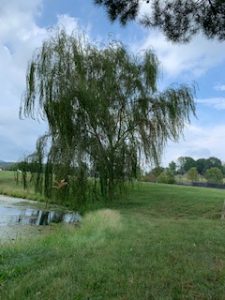
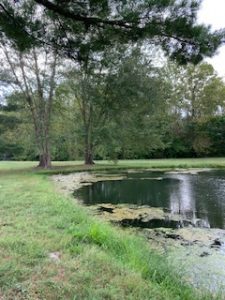
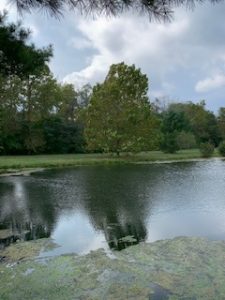
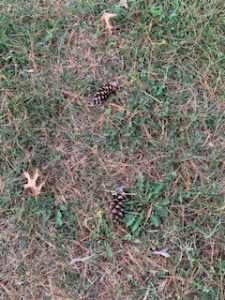
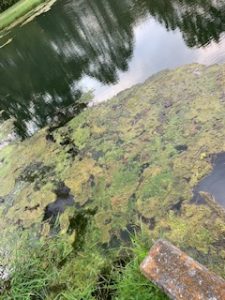
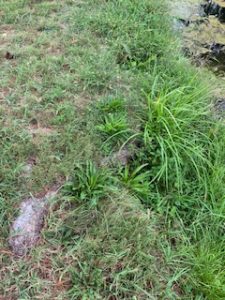
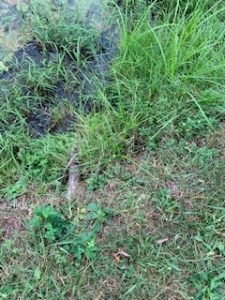
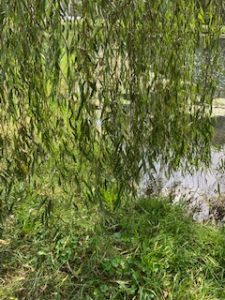

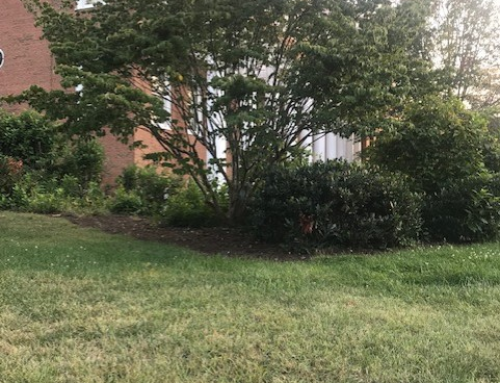
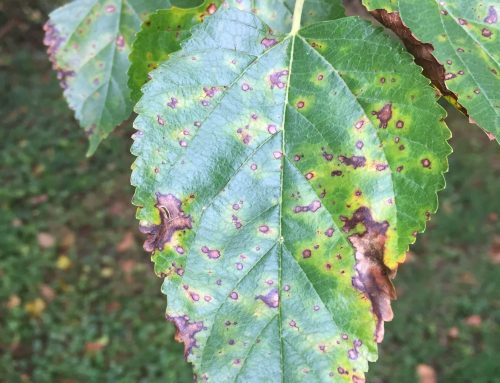
First off, your directions surrounding your sit spot were detailed and I could picture where it was perfectly in my head. Also that Harry Potter reference to the willow tree was exactly on point and your picture of it transported me into the world of Harry Potter ‘Your a Wizard, Harry!” Lastly, I also had trouble trying to find 3 adaptation as my sit spot is in a valley type of area on campus. I can’t wait to read more about your sit spot this coming semester, seems like a quiet and peaceful place that you have chosen.
Yay! I’m glad my description was clear-that was what I was going for! I’m so glad I wasn’t the only person struggling with finding 3 adaptations. Your sit spot seems so peaceful as well!